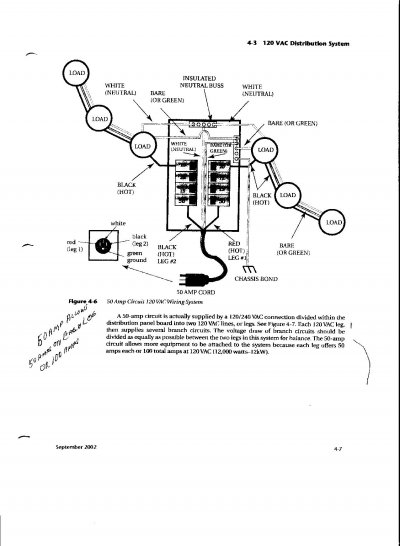http://www.myrv.us/electric/
Please check this site. It will clear up any confusion you may have pertaining to how it works.
The 50 amp RV is a 240 volt circuit split into two legs 180 degrees out of phase, thereby providing two 120 volt hot feeds, one neutral, and one ground, originating from a double pole 240 volt breaker.
This type of 50 amp receptacle can be, and is, used for several other items as well.
Many customers will tell an electrician they need (a) a 240 volt 50 amp circuit installed (b) a 50 amp 110 volt circuit installed, and fail to mention they really want an RV 50 amp circuit installed.
Oftentimes, I have questioned a customer as to what type of "appliances or RV" they are trying to feed, only to have them become rude by saying what a "salesman" told them they needed.
Please check out the site above.
Hopefully, someone will now please pass the salt.


